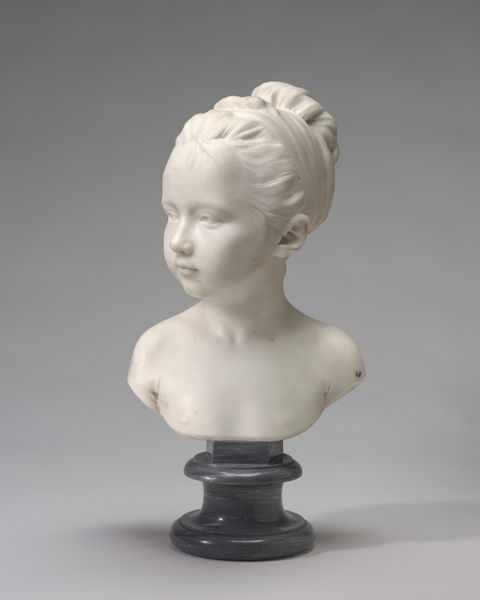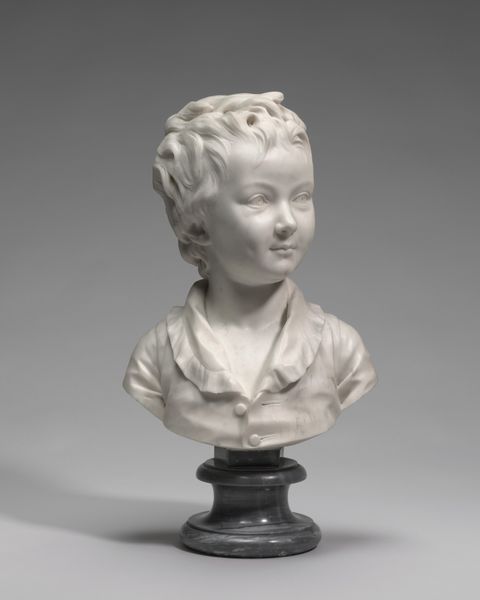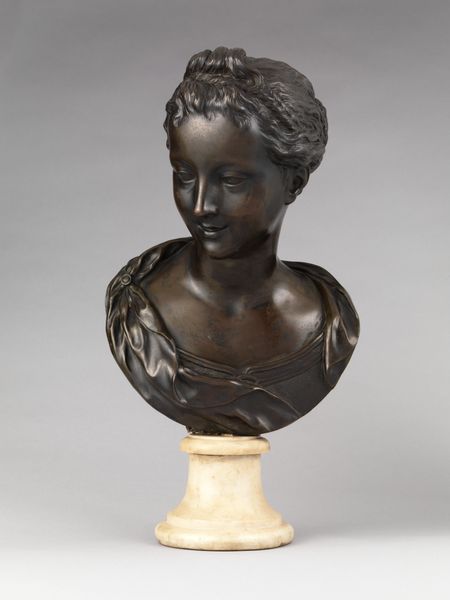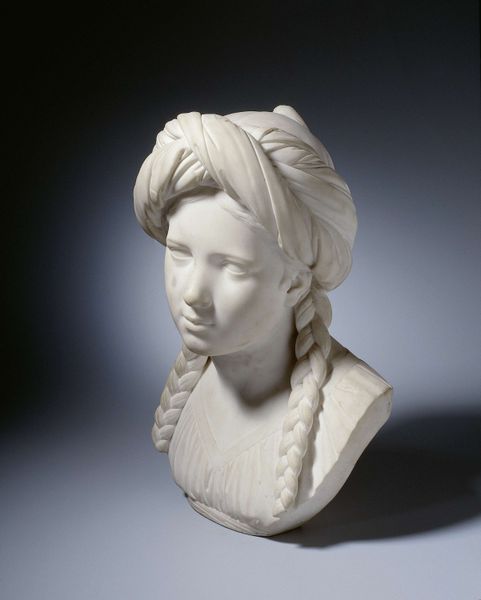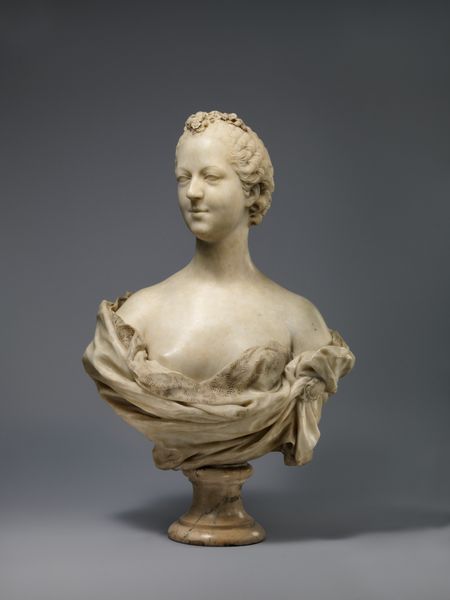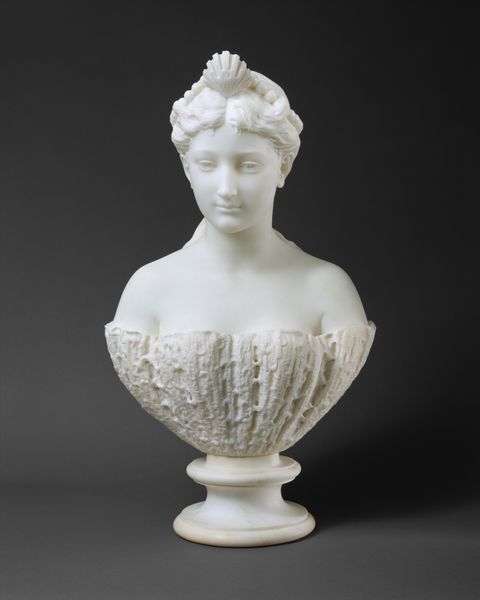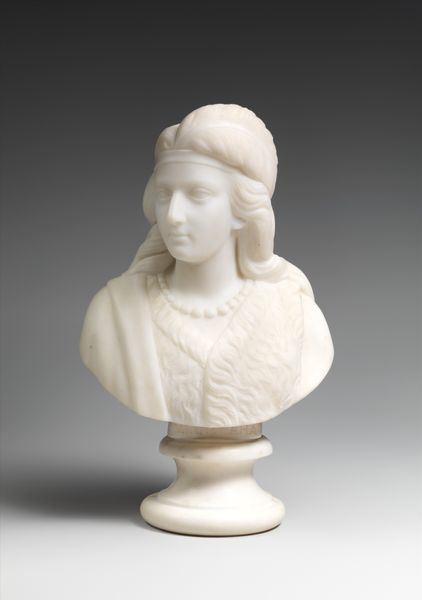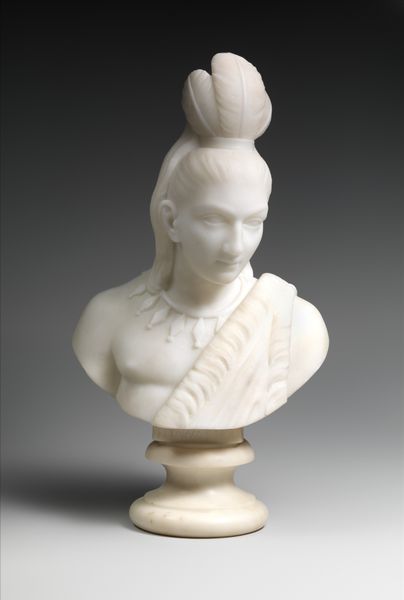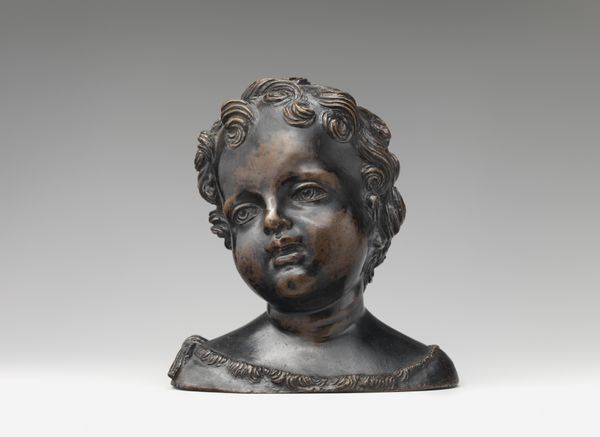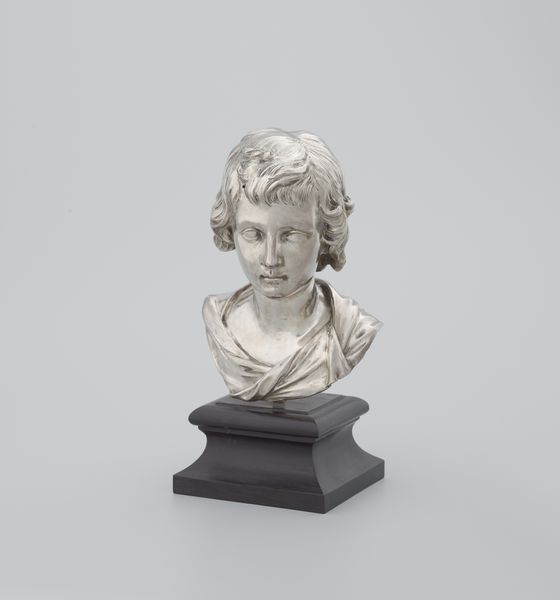
carving, sculpture, marble
#
portrait
#
neoclacissism
#
statue
#
carving
#
head
#
sculpture
#
sculptural image
#
figuration
#
sculpture
#
academic-art
#
marble
Copyright: Public domain
Curator: Looking at this marble bust, I'm immediately struck by its innocent beauty. The clean lines and polished surface are very appealing. Editor: I agree. It's fascinating to consider Houdon's Louise Brongniart through a historical lens. She represents more than just an individual child. She embodies the values of the Neoclassical era, the representation of childhood and innocence. Curator: Absolutely. Jean-Antoine Houdon created this portrait in 1777, demonstrating incredible skill in carving marble. It's amazing to think about the physical labor involved, the careful tooling to achieve such delicate details in the fabric and the soft features of the girl. How long do you think something like this would take to make? And under what working conditions? Editor: Precisely! These details speak volumes about artistic patronage, class structure, gender roles, and representation during the Enlightenment. It's intriguing to note that portraits of children became more popular during this era as part of an increased focus on domestic life and education within bourgeois culture. Curator: That connection to production also makes me wonder, what specific type of marble did Houdon use, and where did it come from? These factors would have certainly influenced both the cost and aesthetic of the final work. Editor: Furthermore, examining it through feminist theory is really important: how did women exist in this time? Who did get their portraits done and what roles did they hold in society? How much influence did wealth play, here? These works were always a construct to project power and uphold societal hierarchies. Curator: Agreed. Thinking about those socio-political issues in marble makes it all so very fascinating. Houdon wasn't merely replicating a face; he was solidifying a particular status in a physical, lasting medium. Editor: In conclusion, examining a seemingly simple bust unearths a dense tapestry of historical and theoretical considerations. The value of art, here, truly is a tool to unveil layers of social structures from bygone eras, urging us to examine present-day inequalities with more rigor.
Comments
No comments
Be the first to comment and join the conversation on the ultimate creative platform.
